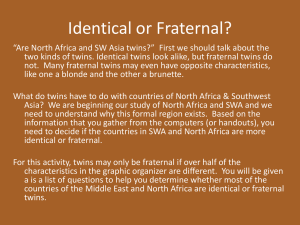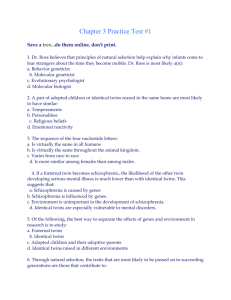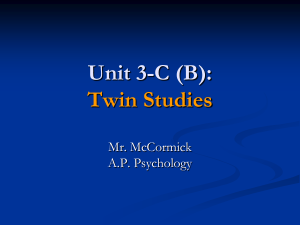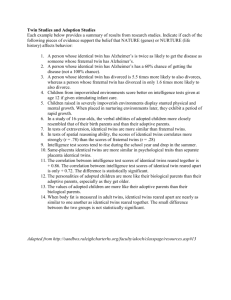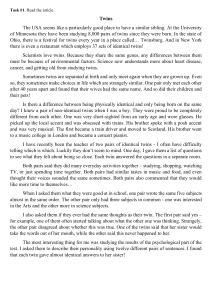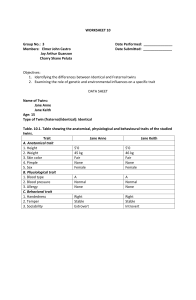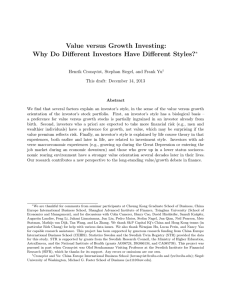Lesson Plan
advertisement
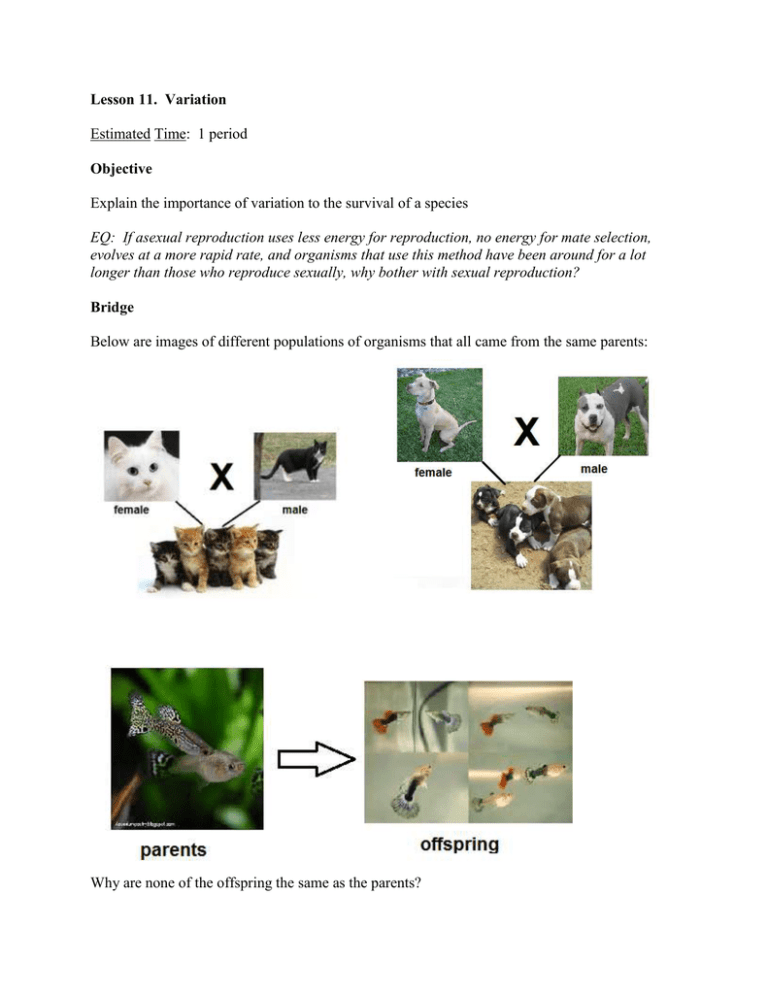
Lesson 11. Variation Estimated Time: 1 period Objective Explain the importance of variation to the survival of a species EQ: If asexual reproduction uses less energy for reproduction, no energy for mate selection, evolves at a more rapid rate, and organisms that use this method have been around for a lot longer than those who reproduce sexually, why bother with sexual reproduction? Bridge Below are images of different populations of organisms that all came from the same parents: Why are none of the offspring the same as the parents? Mini Lesson Share out responses from the bridge Because chromosomes carry so many genes and there is a huge amount of different combinations that can come about AND because of recombination in meiosis a gamete in a sexually reproducing organism is never the same. That is why if you look in your own family your brothers or sisters may have characteristics that are very similar to you but not a single one of you looks exactly alike. This is because where your genes came from the same place, you will not have the exact same ones as your siblings. The same thing happens for all things in nature that reproduce sexually. It is these variations: different inborn immunities, different colorings, different heights, different length legs, different muscle strength in wings, that allow for some individuals in a population to survive in the face of environmental change while other individuals may die off. The only exception to this rule is identical twins and even then there are very slight differences, enough that most people can tell them apart. But these differences come more from personality than their genetics. Identical twins are formed when one egg is fertilized and starts to undergo mitosis. After several divisions, the cells that are dividing do not stay in blastocyst form as a ball of cells but rather a division will form two different blastocysts and two babies, that started off as the same cell, will begin to develop and grow. And since it is hormone and chemical interactions that tell the genes what to do during development, one may receive more of a signal than the other or not receive a signal at all, and slight differences in the gene expression may result. Is it possible to have identical twins where one is a boy and one is a girl? Why or why not? Fraternal twins are no more genetically alike than a brother and a sister. Fraternal twins will come when a woman releases 2 eggs instead of one during ovulation and both eggs manage to survive, implant into the uterus, and develop. Is it possible to have fraternal twins that are the same sex? Different sexes? Why or why not? Work Period Based on the given “families”, predict what the offspring for your group of organisms may look like. Draw them out. Explain why your pictures are predictions and not givens. Use this activity to help you answer the EQ in the summary. Summary Answer the EQ Closing If a new trait were to show up in an organism’s offspring, one that has never existed anywhere in the family tree before, what are the implications of that on future generations? What process is responsible for the emergence of this new trait? SPED and ELL Modifications: 1. Allow students to brainstorm the bridge out loud- share responses together on the Smartboard. Encouraging students to look back in their notes and reflect on differences noted in the pictures. 2. Leave the video clips listed below at a station (iPad or computer) for students to reference during the work period. (work with partners in case any of the videos need to be translated) 3. Encourage the students to use the apps listed below to draw the pictures needed for the work period. Apps and Internet Activities: 1. Video Editor app and Video Camera: Students could use the internet on either an iPad or Computer to discover the difference between identical and fraternal twins- writing their own definition and creating visuals (photos from online- or hand made drawings or diagrams) and piecing them together using the iPad camera to make a video story definition to share with the class. Each group would share not only the information about egg and sperm, but genetics as well. 2. Drawing Box App, Educreation App: Use any of the drawing apps to complete the work period activity 3. Some visual cues for the lesson: a. Identical twin clip: http://www.youtube.com/watch?feature=endscreen&v=qMIR6eNqbXQ&NR=1 b. Fraternal and Identical twins clip: http://www.brainpop.com/science/cellularlifeandgenetics/twins/ c. Parasitic twin: http://www.youtube.com/watch?v=1xrvnyVXDPM&feature=related 4. TwinMaker app: Just for fun or as in intro to this lesson (attention getter when they walk in the door) You can take a photo and create a twin in the same image. Independent Practice Regents questions Parent Set, Group 1: and Parent Set, Group 2: Parent Set, Group 3: Parent Set, Group 4: Parent Set, Group 5: Parent Set, Group 6. Parent Set, Group 7: Parent Set, Group 8:



